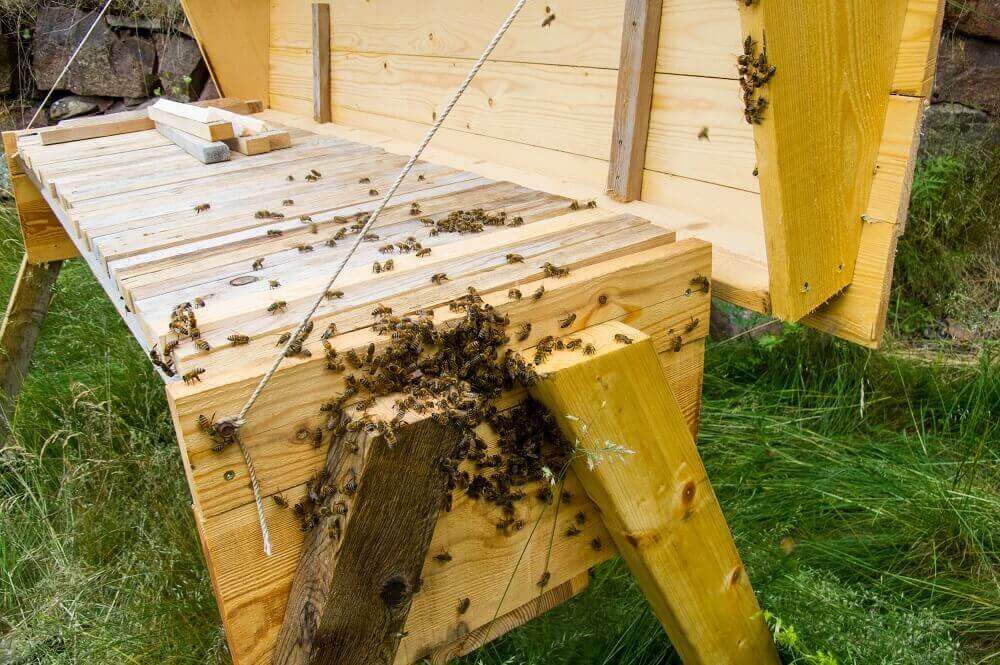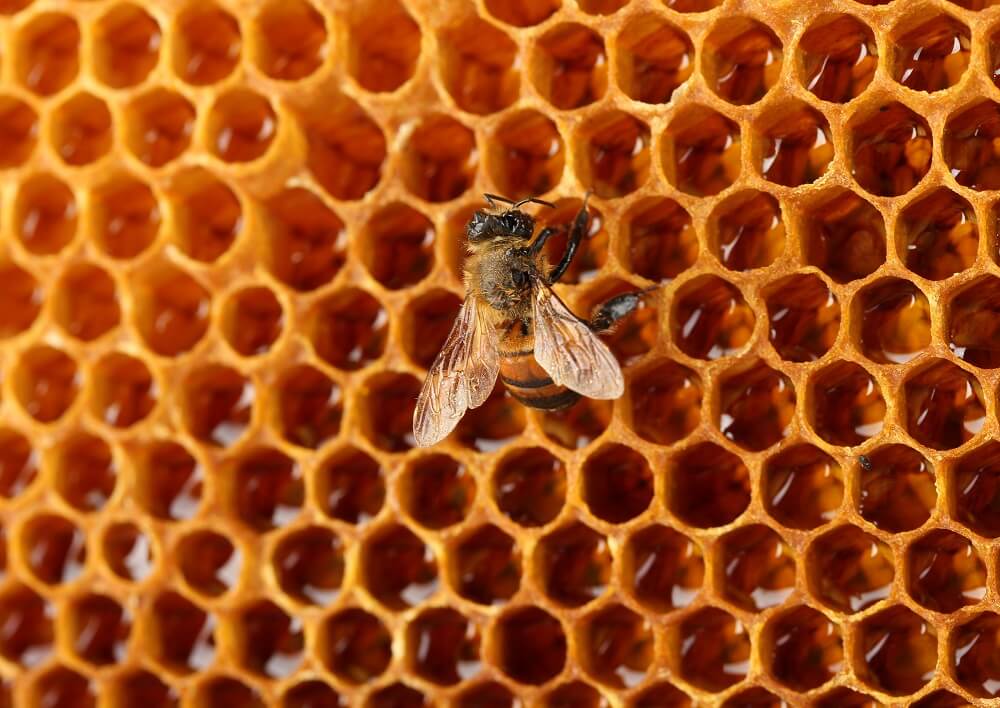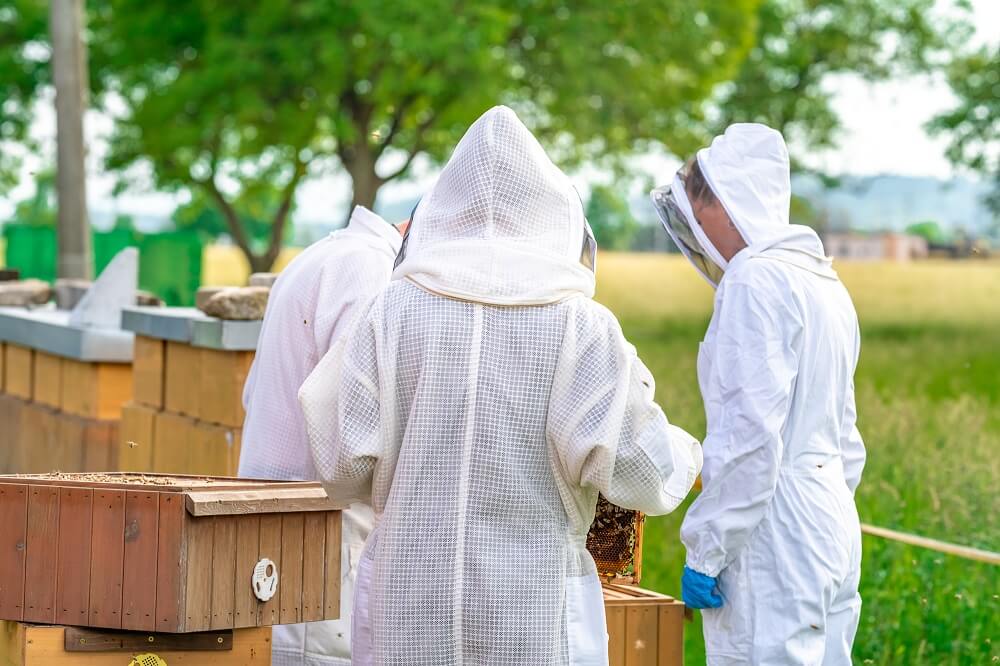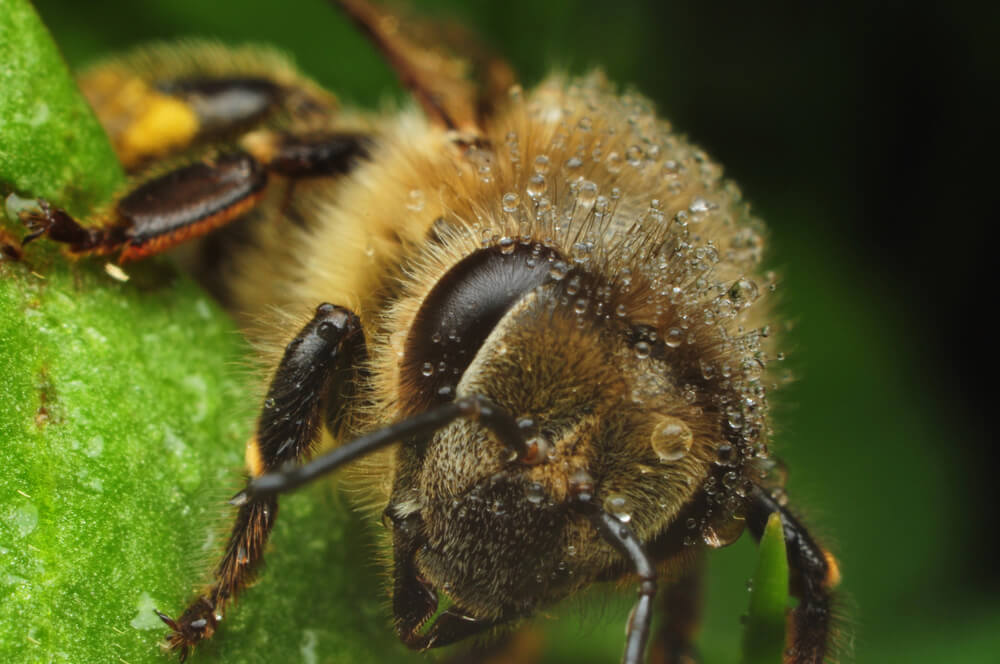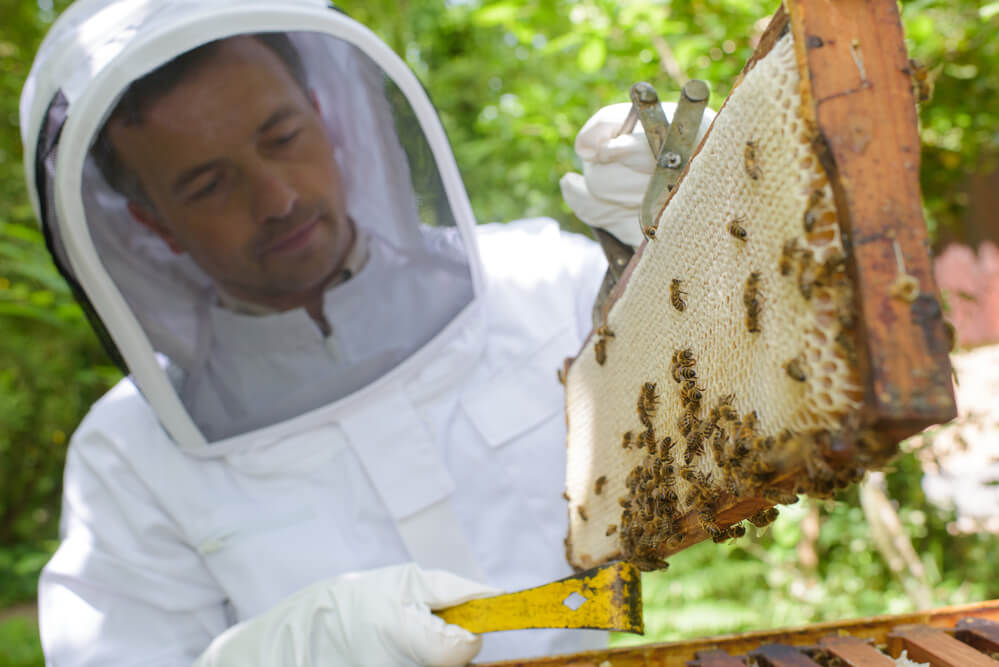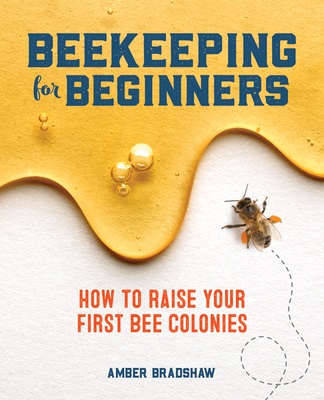In this article:
What is a Horizontal Hive?
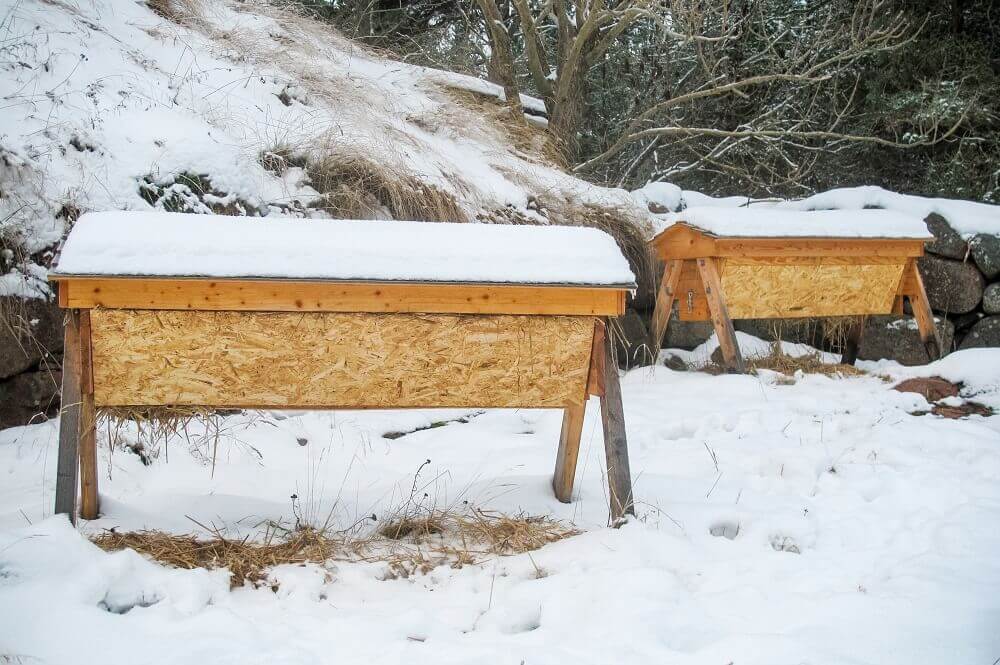
A horizontal hive is a single-story beehive that’s longer in length than it is height. Sometimes it’s referred to as a “long hive.”
Many beekeepers gravitate towards horizontal hives because they require less heavy lifting. Also, you have access to all the frames at once, and the hive is easier to inspect because it stands at waist level.
Horizontal hives also promote natural beekeeping practices: they’re less invasive for bees and mimic their natural habitat. This makes for happier bees overall.
But are horizontal hives right for everyone?
Not quite.
Should You Get a Horizontal Hive? Not Without Knowing This First
Picture this.
You’ve got everything you need to start your new beekeeping hobby.
You’ve picked out a bee suit, bought your hive, and got all your beekeeping equipment ready. You’ve got everything you need to have a successful first year with bees.
Or so you thought.
One day, you go to inspect your hive only to see a bunch of dead bees outside the entrance. Upon further inspection, you realize your entire colony is dead.
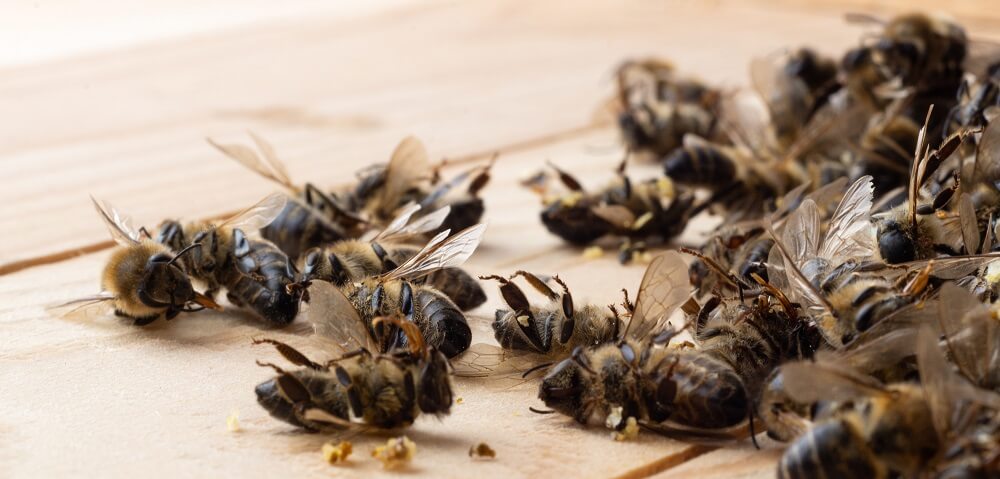
Now there are a million questions going through your mind:
Did my bees catch a disease or infection? Did my hive get robbed by other bees in the area? Did I not winterize my hive properly?
It happens to the best of us.
But, there’s only one problem:
A dead colony is a big deal.
Why?
Because dead colonies can affect other bees in your area. For example, if your bees caught a disease, they could spread it to other hives and actually take down entire apiaries.
That’s why if I could give you one piece of advice as a beginner, it’s to educate yourself on beekeeping first.
In other words?
Don’t jump into the hobby blind.
Read books, take courses, and watch YouTube videos first.
Knowledge is power.
That’s why I recommend reading this book to get you acquainted with bees. You’ll save yourself a lot of headache, grief, and frustration by doing this first.
Because let’s face it.
There’s a lot that can go wrong while beekeeping. For example, if your bees catch a disease like American Foulbrood, you’ll have to kill your colony and burn the hive.
It’s devastating.
But I don’t tell you that to scare you. I tell you that to reiterate how important it is to educate yourself before diving in headfirst.
So in summary?
Here’s the book I read as a beginner. Give it a read.
And now that we’ve covered that, let’s dive into the meat and potatoes…
The 3 Most Popular Types of Horizontal Hives
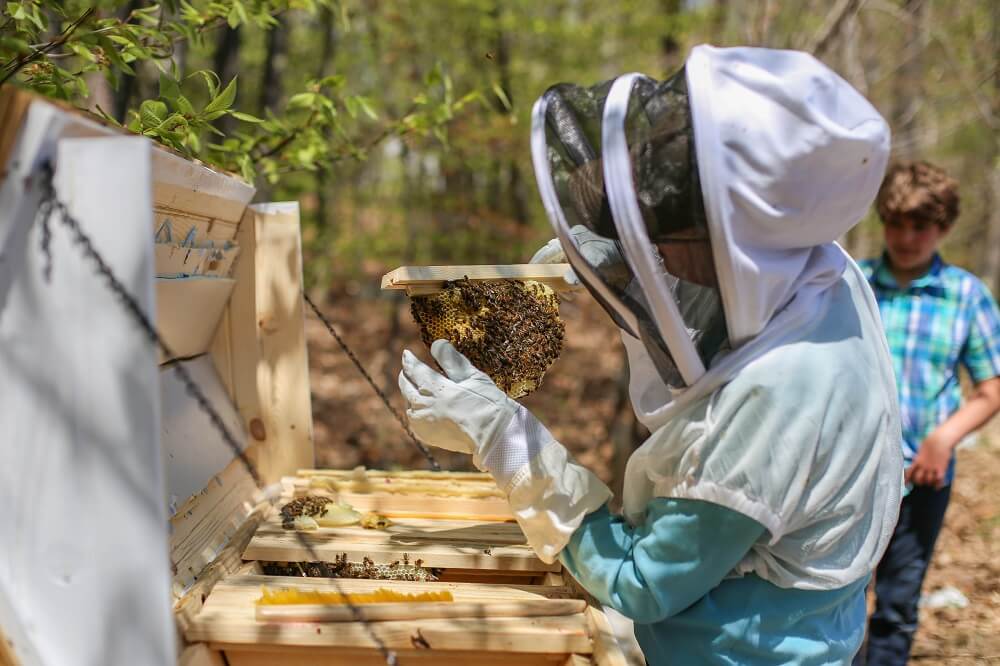
There are three main types of horizontal hives:
- Top bar hive
- Horizontal langstroth hive
- Layens hive
Top Bar Hives
The top bar hive is one of the most popular horizontal hives that dates back several centuries.
So how do top bar hives work?
Simple.
For starters, top bar hives have no frames. Instead, there are individual bars of wood that hang on the top of the hive where the bees build their comb.
Like this:
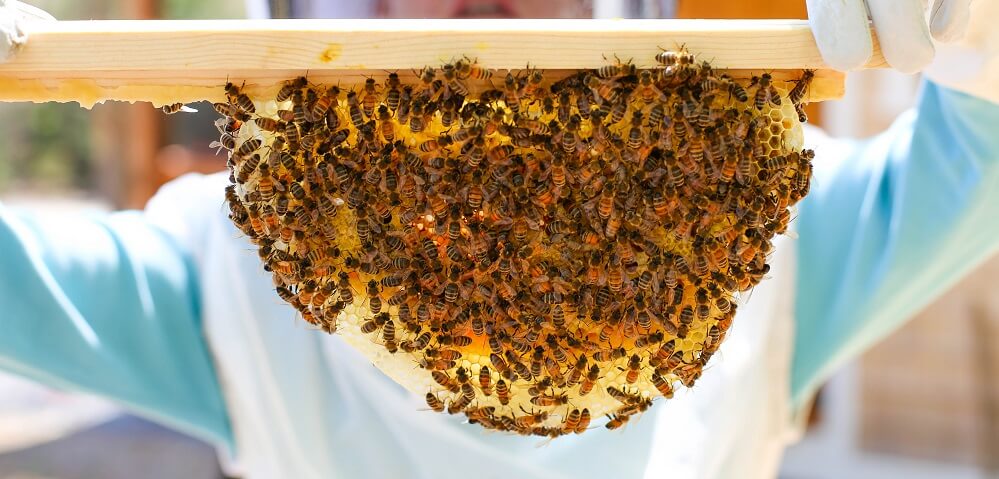
These individual bars placed on the top are where the “top bar” hive gets its name. There are typically between 25-30 bars for the bees to build on.
The key difference with a top bar hive is that they are foundationless. This allows the bees to make their own comb which is a more natural approach to beekeeping.
Instead of using foundation, bees build various sizes of honeycomb to meet their needs, which is how they build in their natural habitat.
Horizontal Langstroth Hives
Horizontal langstroth hives use the same frames as traditional langstroth hives, but they can fit twice as many.
The benefit to using horizontal langstroth hives is that you have all the benefits of a top bar hive, plus the advantage of using standard langstroth equipment. This makes your life easier because langstroth equipment is readily available.
With this type of hive, your frames can use foundationless or foundation.
Layens Hive
The layens hive is known for its taller frames, allowing for more honey production.
This hive style is popular in Europe. It requires minimal management, which makes it less invasive for bees. You only need to inspect these hives a few times per year. This allows you to have more colonies with less disturbance to your bees.
Pros of Horizontal Hives
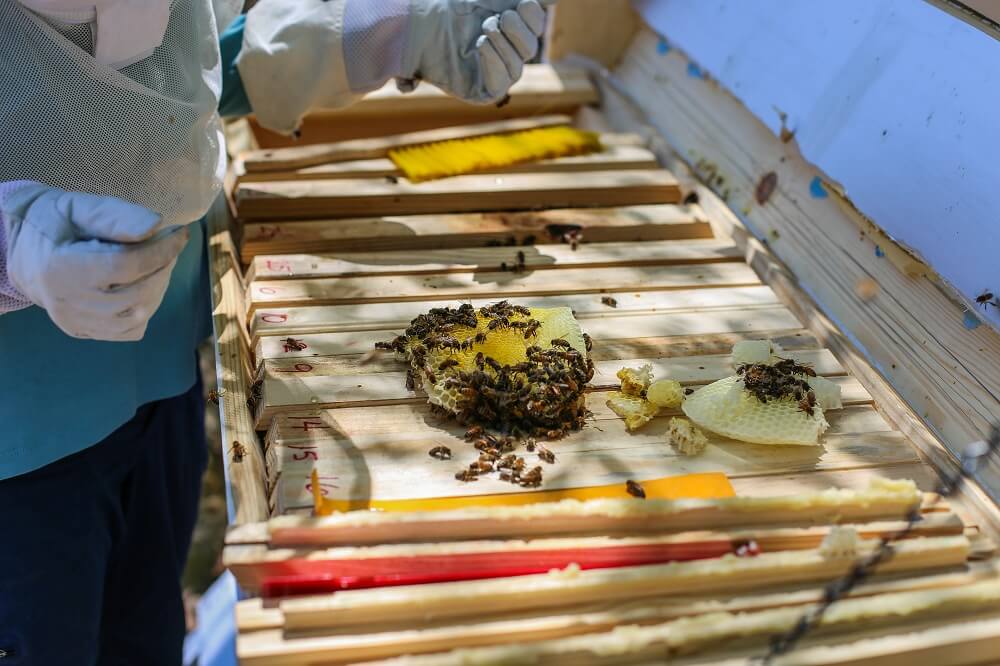
Pro 1: They require less physical labor
Traditional langstroth hives can get extremely heavy. A deep box full of honey and bees can weigh 70-90 pounds.
So let me shoot straight with you:
Lifting heavy boxes makes for hard work and is one of the toughest parts of beekeeping. This is where horizontal hives come in. If you’re limited in physical strength, you’ll save yourself a lot of unnecessary lifting.
Why?
Because with horizontal hives, you’ll just be lifting one frame at a time. This also makes the job less tiresome, which allows you to work more slowly and methodically.
So in a nutshell?
It lets you take the hobby in and enjoy it.
Pro 2: There is less disturbance to your bees
Think about it like this.
When you’re using a traditional langstroth hive, you’re lifting boxes up and down. This disturbs the bees and gets them agitated.
Horizontal hives work the opposite.
You’re only lifting a single frame at a time. This reduces the chances that your bees become defensive and allows you to make fewer errors. For example, you’re less likely to crush bees in the process.
And because you’re less physically tired, you feel less rushed during hive inspections. This allows you to be more thorough during the process.
More importantly?
This is a less invasive method for your bees. Thus, your bees will generally be happier.
That said, I still recommend wearing a bee suit and having a bee smoker handy during hive inspections.
Pro 3: You don’t need a queen excluder
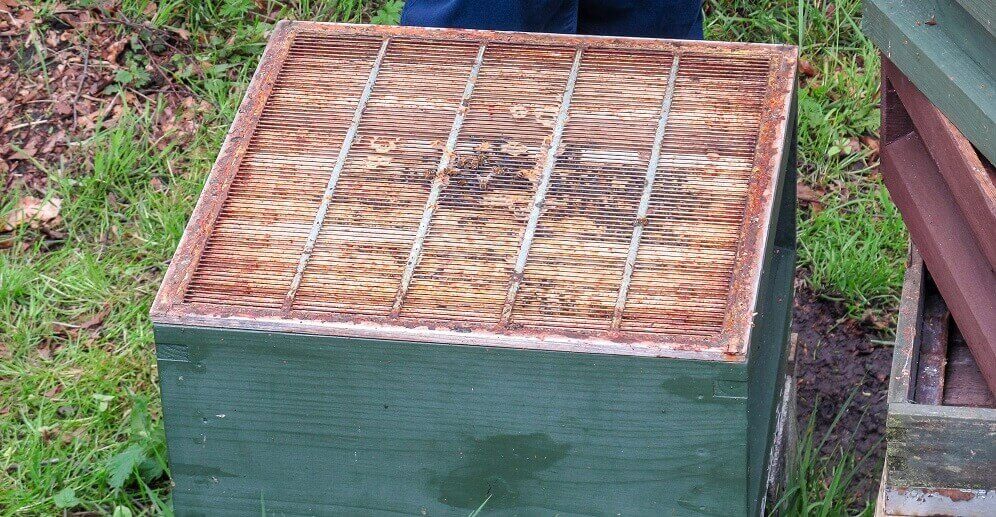
The idea behind the queen excluder is simple.
Worker bees can easily pass through the wire mesh, but the queen bee cannot. This prevents the queen from laying eggs in the honey supers.
The good thing about horizontal hives is that they don’t typically need a queen excluder. The queen has the freedom to move around wherever she pleases within the horizontal hive, but she’ll keep her brood on one end of the box. Again, this makes for happier bees.
Also, not having a queen excluder means that it’s one less piece of equipment you’ll have to buy and store.
Pro 4: You can choose between foundation or foundationless frames
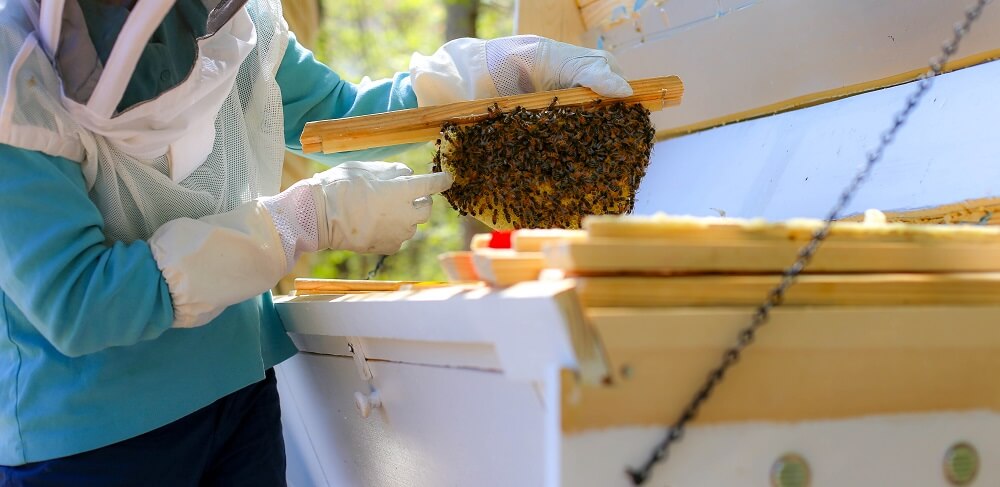
If you choose a top bar hive, you’ll use foundationless frames. On the other hand, layens and horizontal langstroth hives allow you to work with or without foundation.
The decision is entirely up to you.
But the general rule of thumb is that bees prefer to build their own comb. This is considered a more natural beekeeping practice.
If you’re using frames with a plastic foundation, then you may have to brush them with liquid beeswax so that the bees will take to them.
Pro 5: They’re more incognito
Many people don’t realize what a horizontal hive is by looking at it. This means you can lessen the likelihood that your neighbors will be alarmed by them. It also reduces the vandalism/theft aspect that some beekeepers experience.
Cons of Horizontal Hives
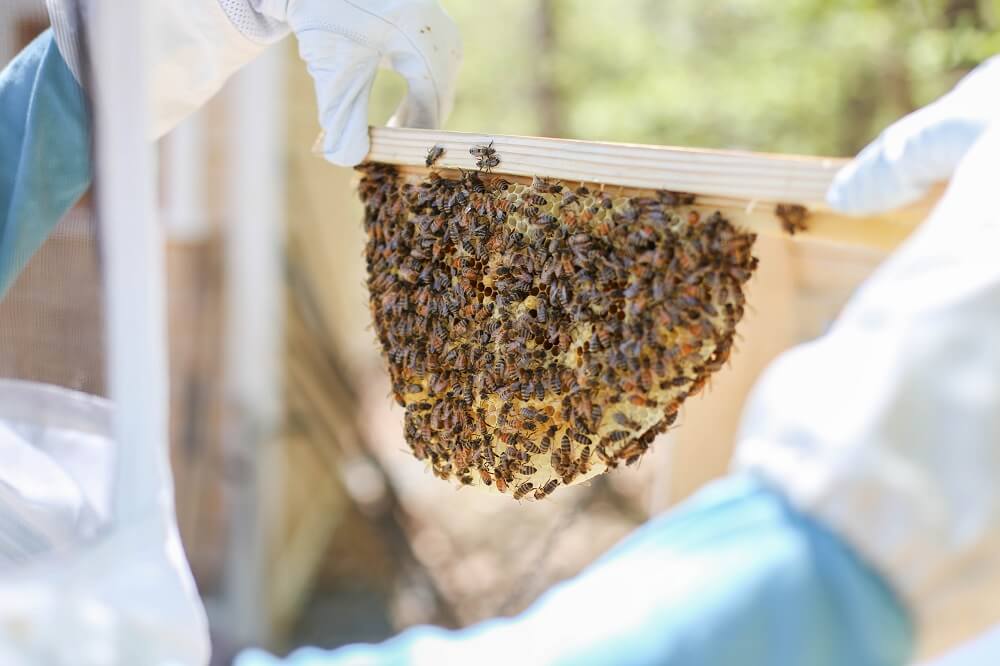
Con 1: It may be more difficult to find equipment
Horizontal hives are not as common as langstroth hives. This means you’ll have to order most of your equipment online. Most of the equipment you find in stores will be for traditional langstroth hives.
Con 2: Honey extraction options may be limited
For example, layens frames are typically too deep for honey extractors. Also, top bar hives are foundationless, so they can break apart easily if you’re spinning them in a honey extractor.
This means you’ll have to use the crush and strain method or comb honey method.
But if you’re a small backyard beekeeper with only a few hives, this may not be a big deal.
The bottom line?
Buying a honey extractor during your first year or two of beekeeping isn’t practical. Your bees need at least one year to grow and become stronger before extracting honey.
Con 3: Horizontal hives take up more space
Horizontal hives are usually between 5 to 6 feet wide. This means that you’ll have to consider space when placing your hive.
If you’re a backyard beekeeper with limited space, vertical hives may be better. They only take up about 3 feet of space (with enough room to walk around).
Con 4: Most beekeepers use traditional langstroth hives
If you need help from local beekeepers, a horizontal hive could make things tricky.
Horizontal hives are alien to beekeepers who only use vertical hives. So if you ask an experienced beekeeper for help with overwintering, pest problems, or diseases, then you might get advice that starts with replacing your horizontal hive with a vertical one.
But don’t get me wrong.
There are plenty of resources online regarding horizontal hives. So, just because local beekeepers may not be as familiar with this hive style doesn’t mean you can’t be successful.
FAQs about Horizontal Hives
- How do you make a horizontal hive?
- How does a horizontal beehive work?
- How many frames are in a horizontal hive?
- How do you keep bees in horizontal hives?
- How much honey does a horizontal hive produce?
- How do you harvest honey from a horizontal hive?
How do you make a horizontal hive?
Great question.
Let me just say this:
If you’re going to make a horizontal hive, I recommend making one that fits standard langstroth frames. As previously mentioned, this is called a horizontal langstroth hive.
Why is this important?
Because langstroth equipment is easily found online and in stores. This will make your life as a beekeeper much easier.
That said, here is a great video tutorial on how to make a horizontal langstroth hive:
Here’s also a link to the horizontal hive plans.
—> Go back to the horizontal hive FAQs
More to Explore:
How does a horizontal beehive work?
Remember:
Horizontal hives are single-story boxes that extend 5 to 6 feet wide.
The frames are positioned at one level, giving you access to all of them at once. Horizontal hives are also waist-level for most people, which makes hive inspections easier.
And as for the bees?
The entire hive is accessible to the colony at all times. This allows them to expand at their own rate. Vertical hives are the opposite. For example, in a traditional langstroth hive, it’s your responsibility to know when your bees are ready to expand.
This can be tricky for beginners.
Also, horizontal hives require less physical labor because you’re only lifting one frame at a time. This is much easier than lifting 30-70 pound boxes from a langstroth hive.
Even better?
You’re causing less disturbance for your bees because you’re not lifting boxes up and down. This means your bees will be more relaxed during hive inspections.
You can buy a horizontal hive or use horizontal hive plans to make one.
—> Go back to the horizontal hive FAQs
More to Explore:
How many frames are in a horizontal hive?
There are usually between 25 and 31 frames.
If you want to make your own horizontal hive, you can use these horizontal hive plans. The cost for materials is under $50, and it’ll require about 2 to 3 hours.
—> Go back to the horizontal hive FAQs
More to Explore:
How do you keep bees in horizontal hives?
This is a common question we get asked, but it’s also a broad one.
My answer?
Keeping bees in a horizontal hive or vertical hive requires much more than I can explain in one article.
So before starting backyard beekeeping, you need to do as much research about the hobby first. Learn the ins and outs before diving in.
That’s why I recommend reading this book, especially if you’re a beginner. It’ll introduce you to the life of honeybees while also explaining the different species of bees, types of hives, and basic questions you may have about beekeeping.
If you want to see what it’s like to install a package of bees into a horizontal hive, here’s a great video:
—> Go back to the horizontal hive FAQs
More to Explore:
How much honey does a horizontal hive produce?
As with anything, the answer depends. Consider these questions first:
What climate do you live in?
Are there plenty of food and water resources in your area?
How strong is your hive?
As you can tell, so many things factor into your bees producing honey.
And keep in mind:
You won’t collect honey from your hive during your first year as a beekeeper. Your bees will need time to get established so they can survive the winter.
This means you need to provide them with bee waterers and learn how to make sugar water for bees. Also, planting the best flowers for bees is always ideal.
That said, a lot of people want to know about horizontal hives vs. vertical. So here’s the thing:
Horizontal hives typically produce less honey than langstroth hives. Once the hive is established, the average for langstroth hives is typically 30-60 pounds of honey. This is especially true during high nectar flow.
If you want to make the honey extraction process easier, check out our flow hive review.
—> Go back to the horizontal hive FAQs
More to Explore:
How do you harvest honey from a horizontal hive?
If your frames can fit inside a honey extractor, you can harvest honey using that.
You can also harvest honey using the following three methods:
1. The Cut Comb Method
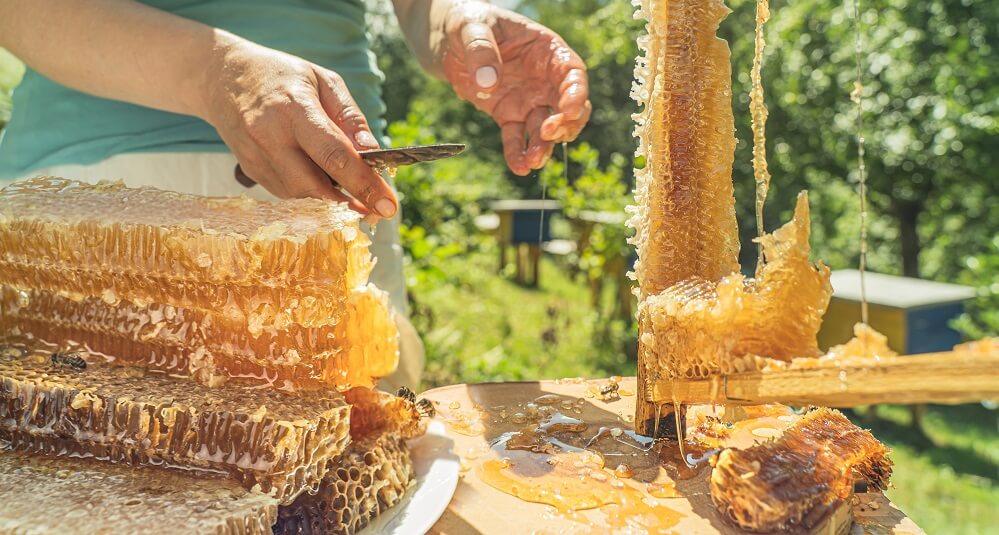
This technique involves slicing the honeycomb into pieces and allowing the honey to drain out of it.
Materials you’ll need:
- A sharp knife
- A baker’s cooling rack
- A baking sheet
Begin putting your baker’s cooling rack on top of the baking sheet. Next, start cutting the honeycomb into squares and putting it on the cooling rack.
Three to four-inch comb squares are the most popular, but you can choose any size you like.
Here’s a handy tip:
Wipe your knife after each cut to keep the honeycomb clean.
Once you’re done cutting your comb, let the honey drain on top of the cooling rack into the baking sheet. This can take several hours.
Once finished, you can pour the honey from the baking sheet into whichever containers you choose.
But don’t forget:
You can only do the cut comb method if you don’t use plastic foundations.
2. The Crush and Strain Method
This technique crushes the honeycomb until there are no lumps. Then you strain the honey, so it filters the comb.
You’ll need:
- Two big bowls
- A wooden spoon or potato masher
- A honey strainer, paint strainer, or cheesecloth
Begin by cutting the comb from the frame and placing it in a bowl. If you’re using a plastic foundation, scrape the comb from each side and put it in the bowl.
Next, grab your wooden spoon or potato masher and start crushing the comb.
Now I’ll shoot straight with you:
Crushing the honeycomb isn’t fun. You’re essentially ruining your bees’ hard work. But, you have to crush each cell to get honey, so keep doing so until it’s lump-free.
Then you’ll strain your honey through a honey strainer, a paint strainer, or a cheesecloth. Allow it to sit overnight to strain all the honey.
Bonus tip:
If you can let it strain in a warm place, the honey will drain faster. That said, you don’t want it to be too hot that it melts the honeycomb.
3. The Combination Method
We’ve talked about comb honey and strained honey, but you can have both.
This means you’ll have a honey jar with a comb at the bottom. This is popular amongst gift shops or small mom-and-pop stores that sell honey.
The process is easy.
Begin by cutting a piece of your honeycomb and putting it into a jar. Then, pour strained honey on top to fill the container full.
And voila!
